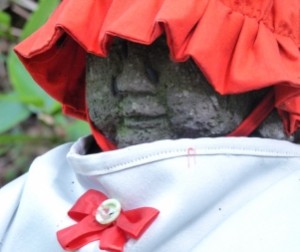For all the glorious wildflowers that peek through the thawing ground, there are just as many snowflakes that are apt to fall … as happened at my house one mid-April Sunday evening. By Monday afternoon, the snow had all but vanished and warmer weather prevailed, but look out, Wednesday arrived with another three-inch pile up. I expected it, not because I looked into my crystal snowball, but it was predicted.
By checking with weather sites, meteorologists, radio and television news channels, I am able to gauge what to wear, how long it will take to get somewhere, even which foods to make for dinner.
Humans have tried to forecast weather since the beginning of time. It’s not that difficult to do in the short term. Look at the sky. Is it cloudy? Smell the air. Is it sweet? It’s probably going to rain (Scientific American has a great article about various scents associated with stormy weather). To the observant, animal behavior can be a predictor of weather, and achy joints are sometimes the result of a change in barometric pressure.
But what if the human has never been north of the equator? Such was the case when 15th century Tarascan Indians joined the Vásquez de Coronado expedition to a place we call New Mexico. Although some Tarascans may have traveled that far to trade their copper bells, since these allies were numerous, it is easy to assume many had never before experienced snow.
THE LITTLE ICE AGE
When solar flare activity decreases, so goes the temperature. And the growing season. Some hypothesize the weather is one reason why prehistoric peoples living in places like Chaco Canyon were forced to move (the Little Ice Age occurred between 1350 -1900 AD).
During the expedition (1540-42), a chronicler named Pedro de Castañeda said, “it did not fail to snow during the evenings and nearly every night, so that they had to clear away a large amount of snow … It fell all night long, covering the baggage and the soldiers, and their beds, piling up in the air, so that if anyone had suddenly come upon the army nothing would have been seen but mountains of snow.” Lucky for those soldiers, the snow had in insulating effect–snow retains heat.
I saw this phenomenon earlier when at least fifteen deer settled themselves beneath the scrub oaks in my yard. They were bundled up, so to speak, in a blanket of snow. Likewise, the conquistadors must have been at least a little cozy. But many of the Mexican Indians were ill-equipped and suffered greatly from the cold, some even froze to death. The explorers turned to the American Indians, Zuni and Pueblo, and traded trinkets for rabbit and turkey feather blankets. But when the weather became more severe, the trading ceased; blankets were flat out stolen.
Likewise, the conquistadors must have been at least a little cozy. But many of the Mexican Indians were ill-equipped and suffered greatly from the cold, some even froze to death. The explorers turned to the American Indians, Zuni and Pueblo, and traded trinkets for rabbit and turkey feather blankets. But when the weather became more severe, the trading ceased; blankets were flat out stolen.
After that first winter (devastating for the American Indians–you may be interested in reading how much so by reading The Winter of the Metal People by Dennis Herrick), the expedition moved on to what they hoped would be the greener pastures of Quivera (Wichita village in Kansas). After that disappointment, the expedition returned to the Tiguex Pueblos where they had wintered the year before.
And The Little Ice Age prevailed.
Fire and Ice
Some say the world will end in fire,
Some in ice.
From what I’ve tasted of desire,
I hold with those who favour fire.
But if it had to perish twice,
I think I know enough of hate
To say that for destruction ice
Is also great
And would suffice.
~ Robert Frost













Recent Comments